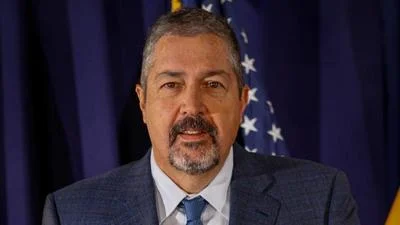At a recent public hearing, Ruth Striegel, Board Chair of New Mexico/El Paso Region Interfaith Power and Light, addressed the Environmental Protection Agency (EPA) about its decision to delay methane emission standards for oil and gas operations. She described the local effects of climate change in New Mexico, including the Rio Grande drying up in Albuquerque for the second time this summer, longer and hotter summers, shorter winters, and erratic temperature swings.
Striegel highlighted concerns about the EPA’s Interim Final Rule Fact Sheet. According to her statement, the delay in compliance deadlines would allow an additional 3.8 million tons of methane, 960,000 tons of volatile organic compounds (VOCs), and 36,000 tons of toxic air pollutants to be released by the oil and gas industry. She noted that methane is significantly more effective at warming the planet than carbon dioxide.
She also criticized the economic impact assessment included in the EPA fact sheet for not considering health-related costs. Striegel pointed out that people living near natural gas releases experience higher rates of illnesses such as thyroid cancer, lung cancer, COPD, and asthma. These health issues can lead to increased healthcare costs and reduced quality of life.
In her testimony before the EPA, Striegel stated: “Thank you for the opportunity to speak on this important issue. My name is Ruth Striegel and I live in Albuquerque, New Mexico. I chair the board of directors of New Mexico/El Paso Region Interfaith Power and Light. We believe that care of creation is integral to spiritual life and service.
I am deeply concerned about our warming world. I live just a few miles from the Rio Grande, the river that Spanish explorers called ‘the great river,’ which dried out entirely in the Albuquerque stretch this summer for the second time. I can’t adequately express what it feels like to see that dry river bed, to understand that we are now entirely dependent on our shrinking supply of groundwater, that the fish in the river have died, and that the plants and animals that depend on the river’s water are in danger of dying too. Our summers are longer and hotter, our winters are shorter and warmer, temperature swings more erratic and damaging.
The Interim Final Rule Fact Sheet includes an economic impact statement that highlights the cost savings to industry. It also states that by delaying compliance deadlines the oil and gas industry will release an extra 3.8 million tons of methane, nine hundred sixty thousand tons of volatile organic compounds, and 36,000 tons of toxic air pollutant. That’s a staggering amount! 3.8 million tons of methane, which is 80 times more effective at warming our planet and causing planetary collapse than carbon dioxide. Nine hundred sixty thousand tons of volatile organic compounds, which react with sunlight to form ozone pollution. You know, in most parts of the country smog is caused by vehicle emissions. In New Mexico it’s caused primarily by oil & gas industry.
The EPA fact sheet economic impact statement leaves out a lot of really important economic impacts. People living in areas where natural gas is being released get sick a lot more frequently. That toxic mix causes thyroid cancer, lung cancer COPD & asthma; people miss work; their health care costs go up; their quality-of-life decreases—what is economic impact of that?
Methane released into atmosphere contributes to climate change—what is economic impact coastal cities dealing with repeated urban flooding? Of communities dealing with damage/loss from hurricanes/floods/fires? The impact releasing these gases into atmosphere much broader than fact sheet would suggest—EPA needs widen lens through which impact measured.
The cost delaying implementation these standards just too great—it makes no sense economically or morally—I urge you move forward with standards as originally planned.”
Striegel urged federal regulators not to postpone new rules designed to limit harmful emissions from oil and gas activities.









